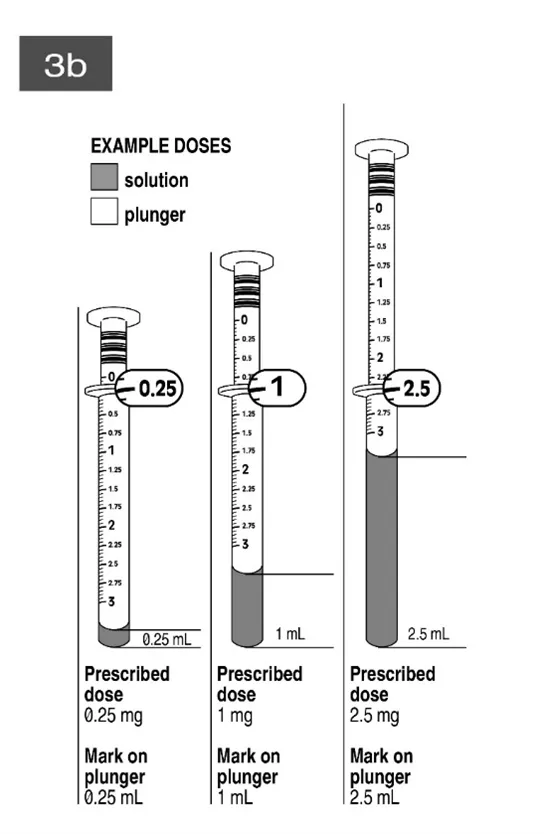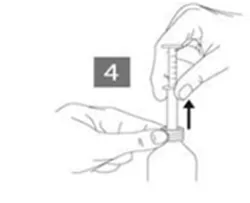We will have limited operations from 15:00 Wednesday 24 December 2025 (AEDT) until Friday 2 January 2026. Find out how to contact us during the holiday period.
Summary
Risperidone, marketed in Australia under the brand name Risperdal and various generic brands, is a prescription medicine used to treat patients with behavioural disorders.
We received 22 adverse event reports in 2024 involving the overdose of risperidone oral solution in Australian paediatric patients. Most reports involved accidentally administering more than the prescribed dose, leading to adverse effects and hospitalisation of the child. No deaths were reported.
We carried out an investigation and found that these administration errors were often due to:
- misunderstanding of dosing instruction
- incorrect use of the dosing syringe
- administration by alternative caregivers, such as babysitters or an extended family member.
To mitigate the risk, the Product Information (PI) and Consumer Medicines Information (CMI) for Risperdal have been updated, with generics required to align theirs with similar information. The revision includes clearer dosing instructions and illustrations to help ensure correct dosing.
The information updates involve oral solution presentations of risperidone, not tablet or injectable forms.
What health professional should do
Given the increased reports of paediatric dosing error, prescribers and pharmacists are advised to take extra care when counselling risperidone patients or caregivers by:
- ensuring all caregivers are aware of the correct dosing instructions
- providing clear explanation on how to measure the exact dose using the supplied syringe
- reminding caregivers to read the dosing label carefully before administration and confirm their understanding, especially with first-time users.
Background information
In November 2024, we conducted a focused signal investigation following a rise in reports of paediatric dosing errors with risperidone oral solution. The investigation revealed most cases involved accidental administration of 10 times the prescribed dose (for example, 5 mL instead of 0.5 mL). These errors were mainly due to misunderstanding of dosing instructions and incorrect use of the provided dosing syringe.
Paediatric patients are more susceptible to side effects, meaning even a slight overdose of risperidone can cause serious adverse reactions, including:
- drowsiness
- sedation
- fast heart rate (tachycardia)
- low blood pressure (hypotension)
- involuntary movement you cannot control (extrapyramidal symptoms),
- irregular heart rhythm (QT prolongation)
- uncontrollable shaking (convulsions).
In response to the investigation, we required pharmaceutical companies to update their PIs and CMIs for risperidone oral liquids with clearer dosing instruction and visual aids.
Various risperidone products are subsidised under the general schedule of the Pharmaceutical Benefits Scheme.
Adverse events reported to us
A search of our publicly available Database of Adverse Event Notifications (DAEN) on 15 April 2025 for risperidone and MedDRA reaction terms ‘accidental overdose’ and ‘overdose’ returned 29 case reports for patients under 18 years of age. None of these resulted in death.
Importantly, inclusion in the DAEN does not mean the details of the reported event have been confirmed, or that the event has been determined to be related to a medicine.
Updates to the PI
Changes to the risperidone PI are highlighted below (Risperdal is used as the example and all other generic products will be required to align with similar information, however the syringe and instructions may vary across brands so please check individual PI documents):
4.2 DOSE AND METHOD OF ADMINISTRATION
DIRECTIONS FOR OPENING THE BOTTLE AND USING THE PIPETTE FOR THE ORAL SOLUTION:
The solution comes with a syringe (pipette). Use only the pipette that comes with RISPERDAL oral solution for measuring the dose prescribed. Measure the exact dose of medicine you need. Pay attention when measuring a small dose, for example for 0.25 mg, measure 0.25 mL (a quarter millilitre); for 0.5 mg, measure 0.5 mL (half a millilitre).
Figure 1: The bottle comes with a child-resistant cap, and should be opened as follows:
|

|
| Figure 2: Insert the pipette into the bottle. |

|
Figure 3: While holding the bottom ring (Figure 3a), pull the top ring up to the mark that corresponds to the number of millilitres or milligrams you need to give (See examples Figure 3b). Measure the exact dose of medicine you need. Pay attention when measuring a small dose, for example for 0.25 mg, measure 0.25 mL (a quarter millilitre); for 0.5 mg, measure 0.5 mL (half a millilitre). 1 mL of RISPERDAL oral solution contains 1 mg risperidone. The measured volume is printed every 0.25 mL / 0.25 mg on the plunger. Figure 3b shows examples of prescribed doses and corresponding marks on the plunger. |


|
Figure 4: Holding the bottom ring, remove the entire pipette from the bottle. Empty the pipette into a non-alcoholic drink by sliding the upper ring down. Mineral water, orange juice, coffee and milk are suitable. Do not use tea. Close the bottle. Rinse the pipette with some cold water after use, let it air dry and store it in its case. Use of detergents or extensive rubbing with a cloth may increase the risk of fading or disappearing print. |

|
Disclaimer
Medicines Safety Update is aimed at health professionals. It is intended to provide practical information to health professionals on medicine safety, including emerging safety issues. The information in Medicines Safety Update is necessarily general and is not intended to be a substitute for a health professional's judgment in each case, taking into account the individual circumstances of their patients. Reasonable care has been taken to ensure that the information is accurate and complete at the time of publication. The Australian Government gives no warranty that the information in this document is accurate or complete and shall not be liable for any loss whatsoever due to negligence or otherwise arising from the use of or reliance on this document.
© Commonwealth of Australia 2025
This work is copyright. You may reproduce the whole or part of this work in unaltered form for your own personal use or, if you are part of an organisation, for internal use within your organisation, but only if you or your organisation do not use the reproduction for any commercial purpose and retain this copyright notice and all disclaimer notices as part of that reproduction. Apart from rights to use as permitted by the Copyright Act 1968 or allowed by this copyright notice, all other rights are reserved and you are not allowed to reproduce the whole or any part of this work in any way (electronic or otherwise) without first being given specific written permission from the Commonwealth to do so. Requests and inquiries concerning reproduction and rights are to be sent to the TGA Copyright Officer, Therapeutic Goods Administration, PO Box 100, Woden ACT 2606 or emailed to tga.copyright@tga.gov.au.
For the latest safety information from the TGA, subscribe to the TGA Safety Information email list via the TGA website.
For correspondence or further information about Medicines Safety Update visit Contact us | Therapeutic Goods Administration (TGA).
Medicines Safety Update is written by staff from the Pharmacovigilance Branch.
- Editor: Dr Daniel Dascombe
- Deputy Editor: Aaron Hall
- Contributors: Emma Knott, Rachel Alexander and Albert Cui

